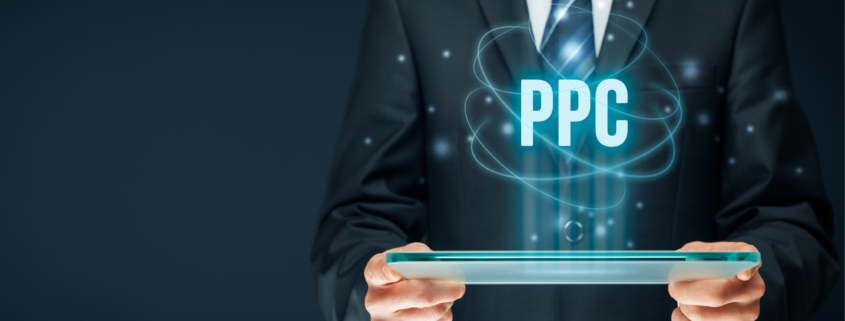5 Tips for Maximizing your PPC Strategy
With nearly 80% of marketers deeming PPC crucial to their success, an effective PPC strategy is more than just an investment—it’s a necessity. In today’s competitive digital landscape, pay-per-click (PPC) advertising stands out as a powerful tool for driving high-quality traffic to your website.
But to unlock its potential, you need more than just a budget and a list of keywords. In this blog, we will explore five essential tips to elevate your PPC efforts and maximize your return on investment (ROI). Here’s what you need to know.
What is PPC Marketing?
Pay-per-click (PPC) advertising is a powerful form of online marketing where advertisers pay each time their ad is clicked. These ads appear across various platforms, including search engines, social media, and other websites. Considering that 93% of all online experiences start with a search engine—most often Google—PPC offers a direct way to reach potential customers. The cost per click (CPC) depends on the platform and the competition for the targeted keywords. Advertisers bid on keywords and those with the highest bids secure prime ad placements. Now, let’s explore some essential tips to help you maximize your PPC strategy.
1. Conduct Keyword Research
Effective keyword research is the backbone of any successful PPC campaign. To help ensure your ads reach the right audience, targeting keywords highly relevant to your business and having the right search volume and competition balance is essential. Here are some strategies to consider:
- Leverage Keyword Tools: Utilize resources like Google Keyword Planner to discover high-performing keywords that closely align with your products or services.
- Focus on Long-Tail Keywords: Target specific, long-tail keywords that may have lower search volumes but indicate higher intent. These keywords often attract more qualified leads who are closer to making a purchasing decision.
- Analyze Competitor Keywords: Study the keywords your competitors are targeting and identify gaps where you can gain a competitive edge.
By conducting thorough keyword research, you can craft a PPC strategy that drives high-quality traffic and optimizes your advertising budget for the best results.
2. Optimize Ad Copy and Landing Pages for PPC
Your ad copy and landing pages are crucial in turning clicks into customers. Your ads must be compelling to drive conversions, and your landing pages should be designed to engage visitors effectively. Here are some tips:
- Craft Attention-Grabbing Headlines: Create headlines that immediately capture attention by using strong action verbs, emotional triggers, and relevant keywords to make your ad stand out.
- Highlight Unique Selling Points (USPs): Communicate what makes your product or service unique. Include discounts, free trials, or limited-time deals to entice users to click.
- Align Ad Copy with Landing Pages: Confirm the messaging and keywords in your ad copy match the content on your landing pages. This alignment improves your Quality Score, reduces bounce rates, and boosts conversion rates.
By optimizing both your ad copy and landing pages, you create a seamless user experience that encourages visitors to take the desired action.
3. Leverage A/B Testing
A/B testing, or split testing, is a powerful method for determining what works best for your PPC campaigns. This method allows you to refine your PPC strategy, helping your ads be optimized for peak performance. By testing different versions of your ads, you can identify which elements resonate most with your audience. Here are some strategies to consider:
- Test Ad Elements: Experiment with different headlines, ad copy, images, calls to action (CTAs), and display URLs. Make one change per test to help measure each element’s impact.
- Evaluate Results Regularly: Monitor key metrics like click-through rate (CTR), conversion rate, and cost per acquisition (CPA) to evaluate the performance of your tests. Implement the winning variations to optimize your campaigns.
- Use Automated Tools: Consider using automated tools like Google Ads‘ Responsive Search Ads (RSAs), which use machine learning to test multiple variations and determine the best combinations.
4. Monitor and Adjust Bids Strategically
Bid management is a critical aspect of PPC advertising. To maximize your return on ad spend (ROAS), you must strategically monitor and adjust your bids based on performance data.
- Set Bid Adjustments: Use bid adjustments to increase or decrease your bids for specific devices, locations, times of day, or audiences. For example, if mobile users have a higher conversion rate, consider increasing your bids for mobile traffic.
- Use Automated Bidding Strategies: Leverage automated bidding strategies such as Target CPA (Cost Per Acquisition) or Target ROAS (Return on Ad Spend) to maximize ad performance based on your specific goals.
- Monitor Competitor Activity: Monitor competitor activity and adjust your bids accordingly. If a competitor lowers their bids, you may find opportunities to capture more clicks at a lower cost.
Regularly monitoring and adjusting your bids helps you remain competitive and ensure your budget is spent effectively.
5. Utilize Audience Targeting for PPC
Advanced audience targeting allows you to reach users who are more likely to convert, helping ensure your PPC budget is spent efficiently.
- Use Remarketing Lists: Create remarketing lists to target users who have previously visited your website but did not convert. Remarketing can help you re-engage these users and encourage them to complete the desired action.
- Target Custom Audiences: Develop custom audiences based on demographics, interests, behaviors, and past interactions with your website. This enables you to deliver highly personalized ads to specific segments of your audience.
- Leverage Lookalike Audiences: Use lookalike audiences to find new potential customers who share characteristics with your existing customers. This can help you expand your reach while maintaining relevance.
By utilizing advanced audience targeting techniques, you can ensure that your ads are shown to the right people at the right time, ultimately boosting your campaign’s effectiveness.
Final Thoughts
Maximizing your PPC strategy requires thorough research, continuous optimization, and strategic targeting. These five tips can enhance your PPC campaigns, reach your desired audience more effectively, and achieve better results. It is time to get in the game if you haven’t incorporated PPC advertising into your marketing strategy.
At Onimod Global, we can help you optimize your PPC strategy and generate the leads you have been waiting for. Contact us today to learn more about how we can help you with your PPC strategy for 2024 and beyond.










